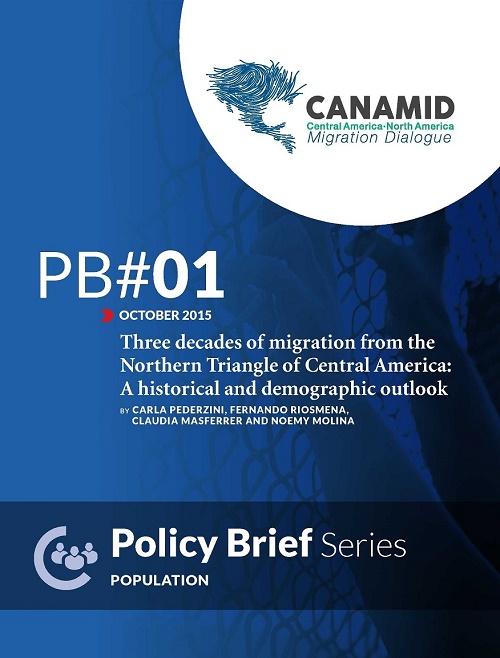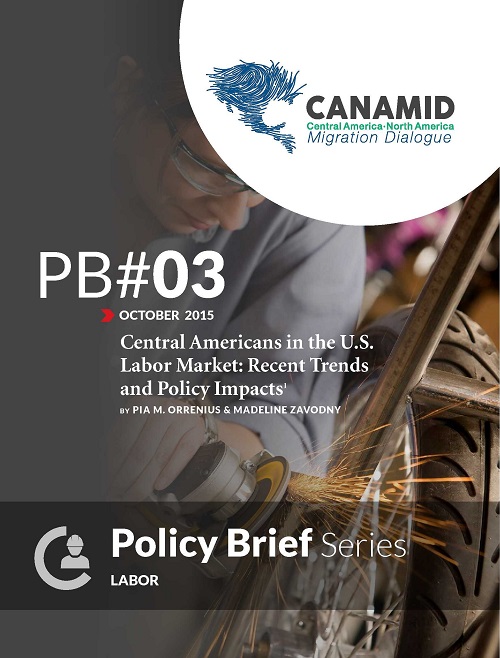 PB#01: Three Decades of Migration from the Northern Triangle of Central America: A Historical and Demographic Outlook
Carla Pederzini, Fernando Riosmena, Claudia Masferrer and Noemy Molina
PB#01: Three Decades of Migration from the Northern Triangle of Central America: A Historical and Demographic Outlook
Carla Pederzini, Fernando Riosmena, Claudia Masferrer and Noemy Molina
In spite of a major economic slowdown in 2007-2009 and an increasing escalation of immigration and border enforcement in both the United States and Mexico over the last decade, unauthorized migration from the Northern Triangle of Central America (NTCA, i.e., El Salvador, Guatemala and Honduras) has persisted. In light of a historical and demographic overview, we offer a set of basic policy recommendations for the management of the different migration flows, and the establishment of new data and research needs to better understand their drivers and future trends
 PB#03: Central Americans in the U.S. Labor Market: Recent Trends and Policy Impacts
Pia Orrenius and Madeline Zavodny
PB#03: Central Americans in the U.S. Labor Market: Recent Trends and Policy Impacts
Pia Orrenius and Madeline Zavodny
Immigration from Central America to the United States is rising rapidly. Much of this inflow is unauthorized. Violence and corruption in Central America is affecting both the volume and composition of current migrants who are less educated, less likely to speak English, and who face tougher border and interior enforcement than Central Americans who immigrated in the 1980s and 1990s faced. We offer a number of policy recommendations aimed at expanding legal avenues to accommodate immigrant flows from Central America while regularizing those already in the U.S.